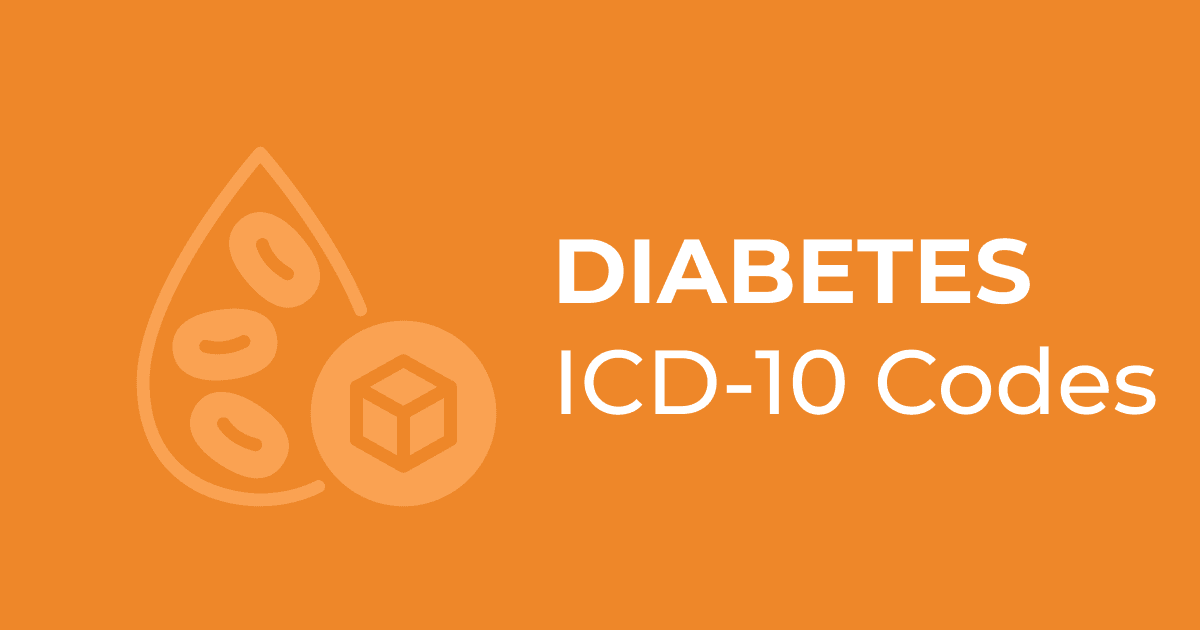Comprehensive Guide to Diabetes ICD-10 Codes

This guide covers the primary ICD-10 codes for various types of diabetes, including Type 1, Type 2, gestational diabetes, and associated complications.
ICD-10 Codes for Diabetes by Type
Here is a breakdown of ICD-10 codes based on the type of diabetes and related complications.
1. Type 1 Diabetes (E10.-)
Type 1 diabetes is an autoimmune condition where the body does not produce insulin. Below are common codes for Type 1 diabetes:
- E10.9 - Type 1 diabetes mellitus without complications: This code is used for uncomplicated cases.
- E10.10 - Type 1 diabetes mellitus with ketoacidosis without coma: Applied when the patient has ketoacidosis but no coma.
- E10.21 - Type 1 diabetes mellitus with diabetic nephropathy: Use this for kidney-related complications.
- E10.36 - Type 1 diabetes mellitus with diabetic cataract: Used when diabetes has led to cataracts.
Note: Codes under E10 cover a range of complications. Use specific codes to detail complications like nephropathy or ketoacidosis.
2. Type 2 Diabetes (E11.-)
Type 2 diabetes involves insulin resistance and is more common among adults. Here are key codes for Type 2 diabetes:
- E11.9 - Type 2 diabetes mellitus without complications: This is the general code for uncomplicated cases.
- E11.40 - Type 2 diabetes mellitus with diabetic neuropathy, unspecified: When neuropathy is present but not further specified.
- E11.65 - Type 2 diabetes mellitus with hyperglycemia: For cases involving elevated blood glucose levels.
- E11.22 - Type 2 diabetes mellitus with diabetic chronic kidney disease: Use when Type 2 diabetes results in chronic kidney disease, with CKD stage specified separately.
Tip: Always document additional conditions such as hypertension or obesity to give a full picture of the patient’s health status.
Coding for Gestational Diabetes and Other Specific Types
Gestational diabetes and other specific diabetes types also have unique ICD-10 codes.
3. Gestational Diabetes (O24.4-)
- O24.410 - Gestational diabetes mellitus in pregnancy, diet-controlled: For diet-controlled cases, with the fourth digit indicating trimester (1-4).
- O24.414 - Gestational diabetes mellitus in pregnancy, insulin-controlled: For cases requiring insulin control, with the fourth digit indicating trimester (1-4).
- O24.43 - Gestational diabetes mellitus in the puerperium: For cases persisting post-delivery.
Note: The fourth character in these codes varies by trimester, so document carefully.
4. Other Specified Diabetes (E13.-)
This category includes diabetes caused by other specific factors, such as drug-induced diabetes or diabetes due to genetic conditions:
- E13.9 - Other specified diabetes mellitus without complications: Use this for specified diabetes types without further complications.
- E13.51 - Other specified diabetes mellitus with diabetic peripheral angiopathy with gangrene: For cases involving peripheral blood vessel damage and gangrene.
Why It Matters: Specifying the type and complications ensures accurate treatment plans and maximizes reimbursement potential.
Best Practices for Documenting and Coding Diabetes
- Be Specific with Complications: Avoid unspecified codes when details are available. Always include additional codes for specific complications.
- Stay Updated on ICD-10 Changes: Regularly check for updates to ensure you’re using the latest codes.
- Code for Coexisting Conditions: Diabetes often coexists with other conditions. Coding for these can provide a comprehensive overview for treatment planning.
Common Pitfalls in Diabetes ICD-10 Coding
- Using Unspecified Codes Prematurely: Codes like E11.9 should only be used when no details on complications are documented. Aim for specificity where possible.
- Neglecting Gestational Diabetes in the Puerperium: If gestational diabetes persists postpartum, use the appropriate O24 code for the puerperium period.
- Overlooking Additional Conditions: Conditions like hypertension, obesity, or dyslipidemia should be documented, as they are relevant for billing and patient management.
Related Resources for Diabetes ICD-10 Coding
Stay informed and accurate by exploring these resources:
CDC’s ICD-10-CM Browser: A searchable tool for up-to-date ICD-10 codes and descriptions.
American Diabetes Association (ADA): ADA offers information on diabetes management that aids in understanding coding nuances.
Centers for Medicare & Medicaid Services (CMS): CMS provides billing guidelines, updates, and compliance information for diabetes care.
American Medical Association (AMA): AMA offers resources and updates on ICD-10 coding practices, particularly for diabetes-related diagnoses.
Using this guide and these resources will help ensure accurate and thorough diabetes coding, supporting proper treatment and optimizing reimbursement.
Disclaimer: This guide is based on the best available research to ensure accuracy and comprehensiveness. However, coding practices and guidelines can change. For the most up-to-date and detailed information, please refer to official resources and consult a certified coding professional as needed to confirm specific details for your practice.
Considering a new medical billing company?
Explore our top medical billing companies marketplace.

